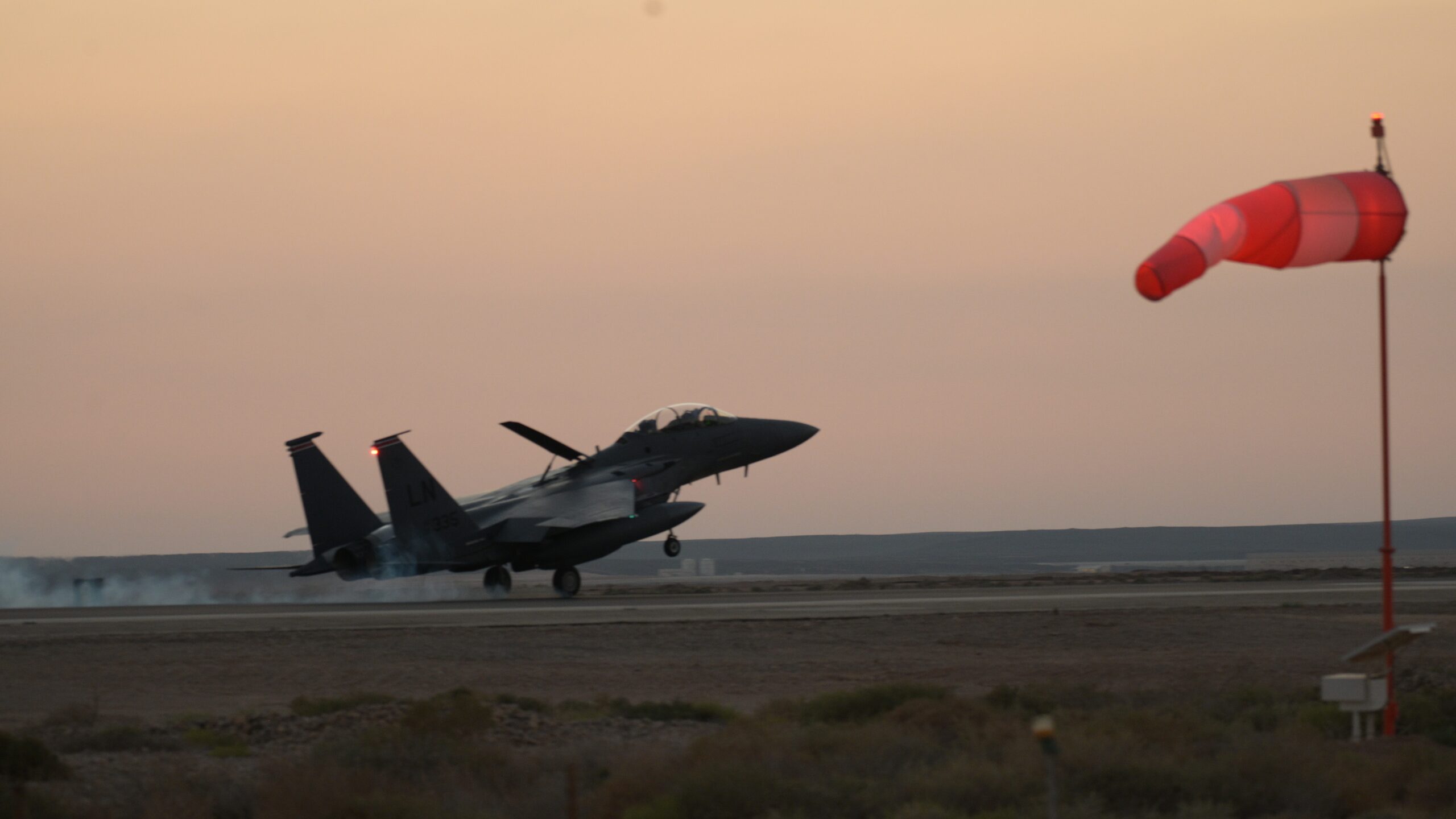

The U.S. Air Force defines an “ace” as any pilot that has more than five combat kills. It’s been decades since American pilots reached that status, but that might have changed this month.
On April 13, Iran and its partners in Syria and Yemen fired more than 300 munitions — more than 150 drones as well as dozens of ballistic missiles and several cruise missiles — toward Israel. Elements of the British, French, Jordanian and American militaries helped Israel intercept 99% of those munitions. Among that, F-15E fighter jets from the U.S. Air Force’s 494th Fighter Squadron and 335th Fighter Squadron shot down more than 80 Iranian drones before they could reach their target.
There’s a fair chance at least one pilot from the two squadrons now fits the criteria for an ace. The two squadrons, as well as U.S. Air Forces Central, have not released details on how many F-15Es from the two squadrons participated in the mission, what weapons were used or how many drones were shot down per plane, but the math at play suggests there are some new aces. Task & Purpose contacted the squadrons and command for more information, but was only told that AFCENT is reviewing the operation.
The 335th operates 24 F-15E fighter jets; a spokesperson for the 494th would not say how many F-15Es are currently in the squadron. Squadrons do not always put every fighter into the skies for a mission, keeping some in reserve, depending on the nature of the mission. The F-15E is a fighter jet meant for both air-to-air and air-to-ground missions and as such can carry eight missiles alongside its internally mounted gun. The exact missile loadout depends on the mission, but the armament capacity makes each jet capable of getting five or more kills.
So back to the math. Even if every jet in each squadron was put into the sky — which again is highly unlikely and AFCENT has not specified how many were involved — there’s no guarantee that each F-15E got a kill or that the total kills were evenly distributed. With more than 80 drones shot down by pilots from the two squadrons in what U.S. officials described as “dozens of engagements,” the math suggests that it’s likely that at least one if not more Air Force pilots earned the more than five kills needed to count as an ace two weekends ago.
The Air Force hasn’t had a new flying ace since the Vietnam War, in part because of how dogfights have faded from importance in modern combat. With the rise of aerial drones, that might change.
Subscribe to Task & Purpose Today. Get the latest military news and culture in your inbox daily.
There might be the question of whether or not an aerial drone counts as a kill toward ace status. After all, they’re uncrewed aerial vehicles. It’s not as if pilots are getting into dogfights with them. And the size of the drone might matter too. Iranian Shahed-136 and Shahed-131 drones are maneuverable, they’re not just rockets, and they’re certainly bigger than, say, off the shelf commercial quadcopters used by Ukranian ground troops. The answer might go back eight decades. In World War II, the U.K.’s Royal Air Force counted shot down German V-1 rockets as kills toward a pilot’s record. If that counts, the U.S. Air Force might count the downed Shahed drones.
This month’s mission over the Middle East isn’t the first time U.S. fighter jets shot down drones over the Middle East. Since the start of the Israel-Gaza war in October, American aircraft have been busy shooting down drones and missiles fired by the Houthi movement in Yemen, either midair or destroying them before they could be launched. They’ve also been involved in wider airstrike operations in Yemen. After several months, those shootdowns are racking up. This month the U.S. Navy released photos of some of the F-18s with the USS Dwight D. Eisenhower Carrier Strike Group, and at least one sported “kill markings” showing two drones and several missiles. It’s not clear if that’s the only F-18 with those markings, or if any of the Navy aviators have achieved ace status.
Meanwhile on the ground, Army Spc. Dylan Green, a soldier with the 10th Mountain’s 2nd Brigade Combat Team, has earned the nickname the “Ace of Syria” after five confirmed shootdowns of drones, but not with any fighter jet.
If any Air Force pilot did make ace two weekends ago, so far no images or news have made it online or on social media platforms. The Air Force’s own regulations say that any such marking needs to be “a 6-inch green star with a 1/2-inch black border located just below and centered on the pilot’s name block.” The type of aircraft downed would be put inside the star. So keep an eye out for an F-15E with some newly stenciled art, just in case.
The latest on Task & Purpose
- 75th Ranger Regiment sweeps Best Ranger, Best Mortar, and International Sniper competitions
- Married Army couple win back-to-back Sapper school awards
- Special Forces engineers are training to dig ditches and destroy tanks
- This is why Marines were at Mar-a-Lago
- Supreme Court sides with Army veteran in overlapping GI Bill benefits case